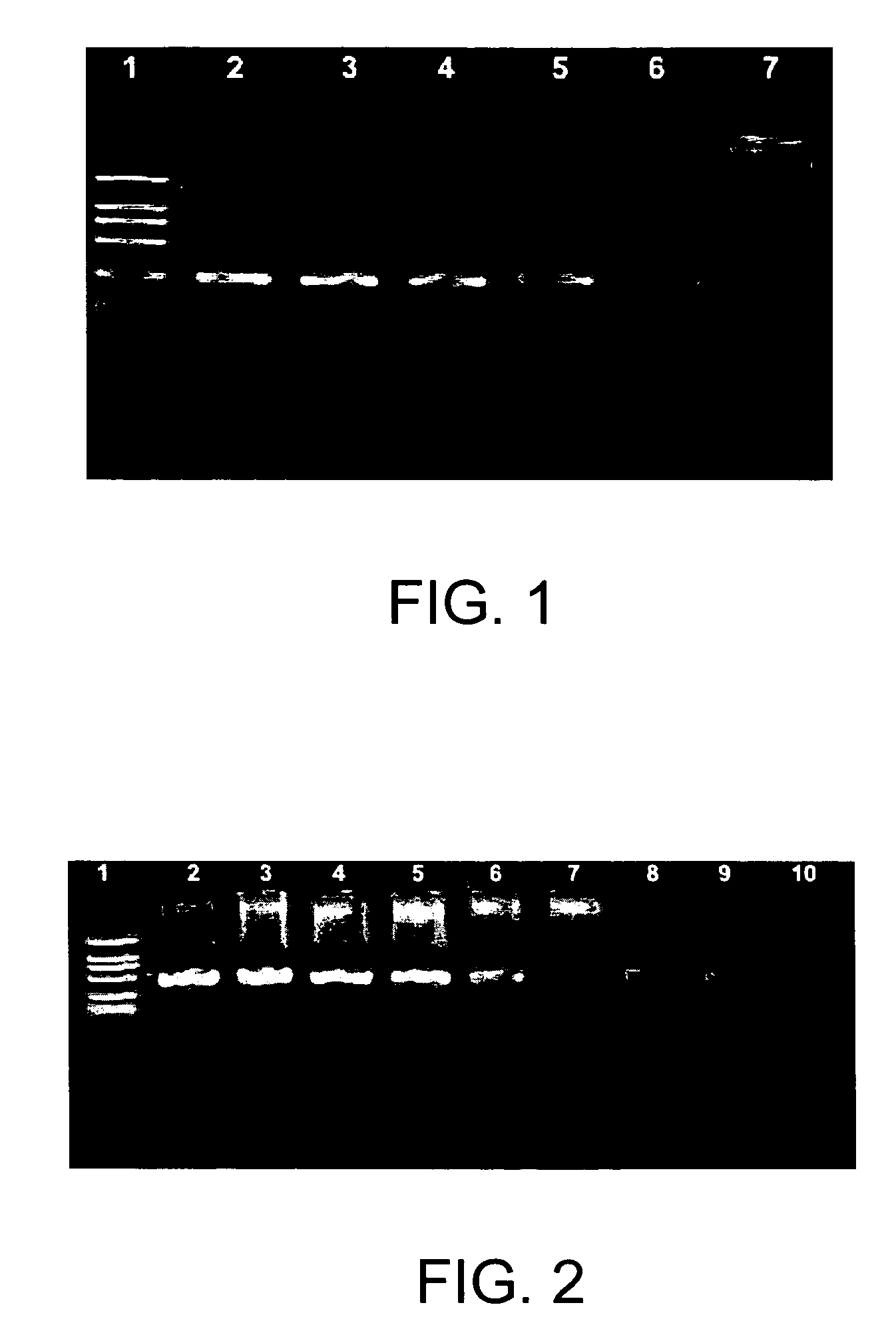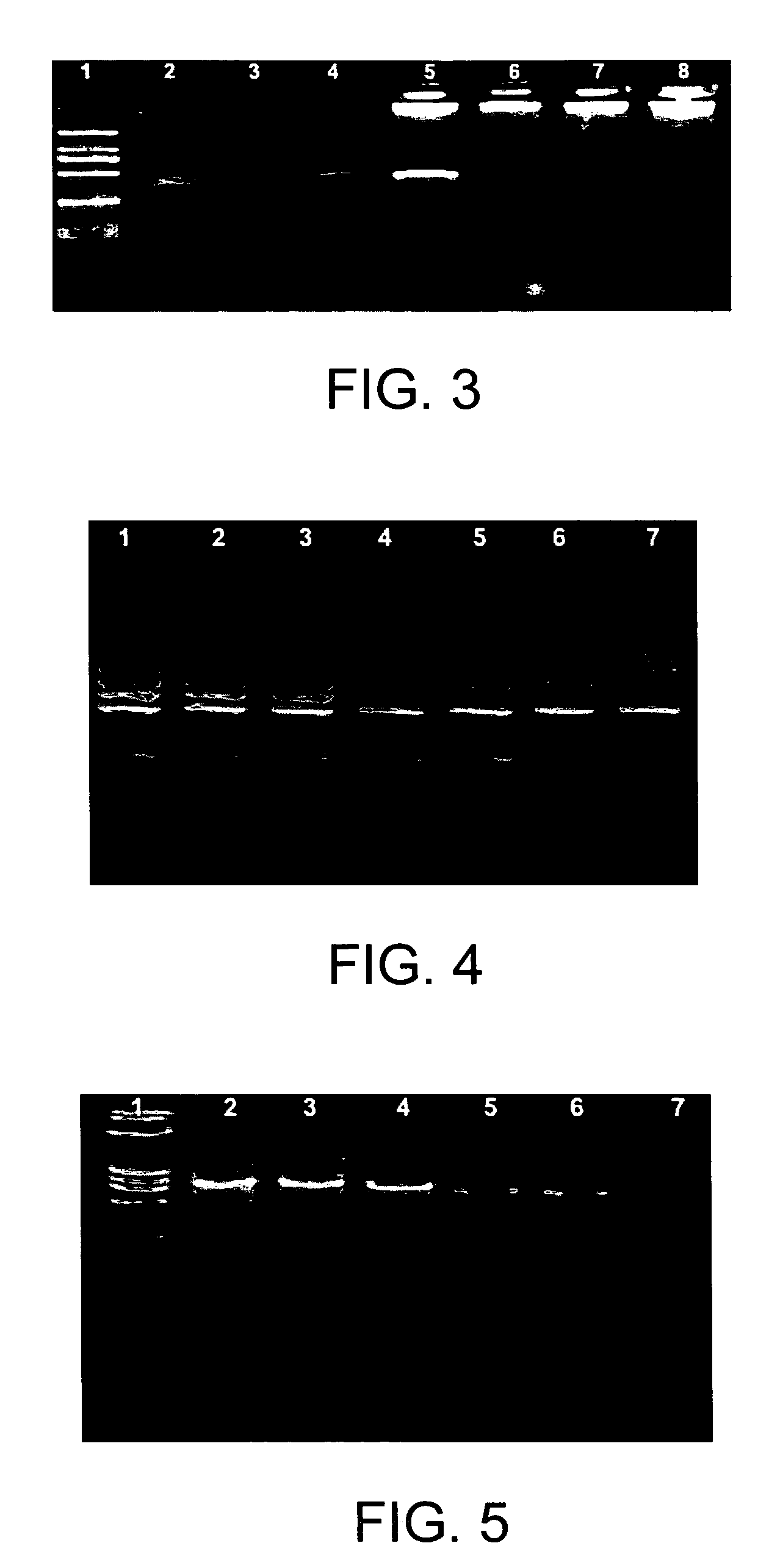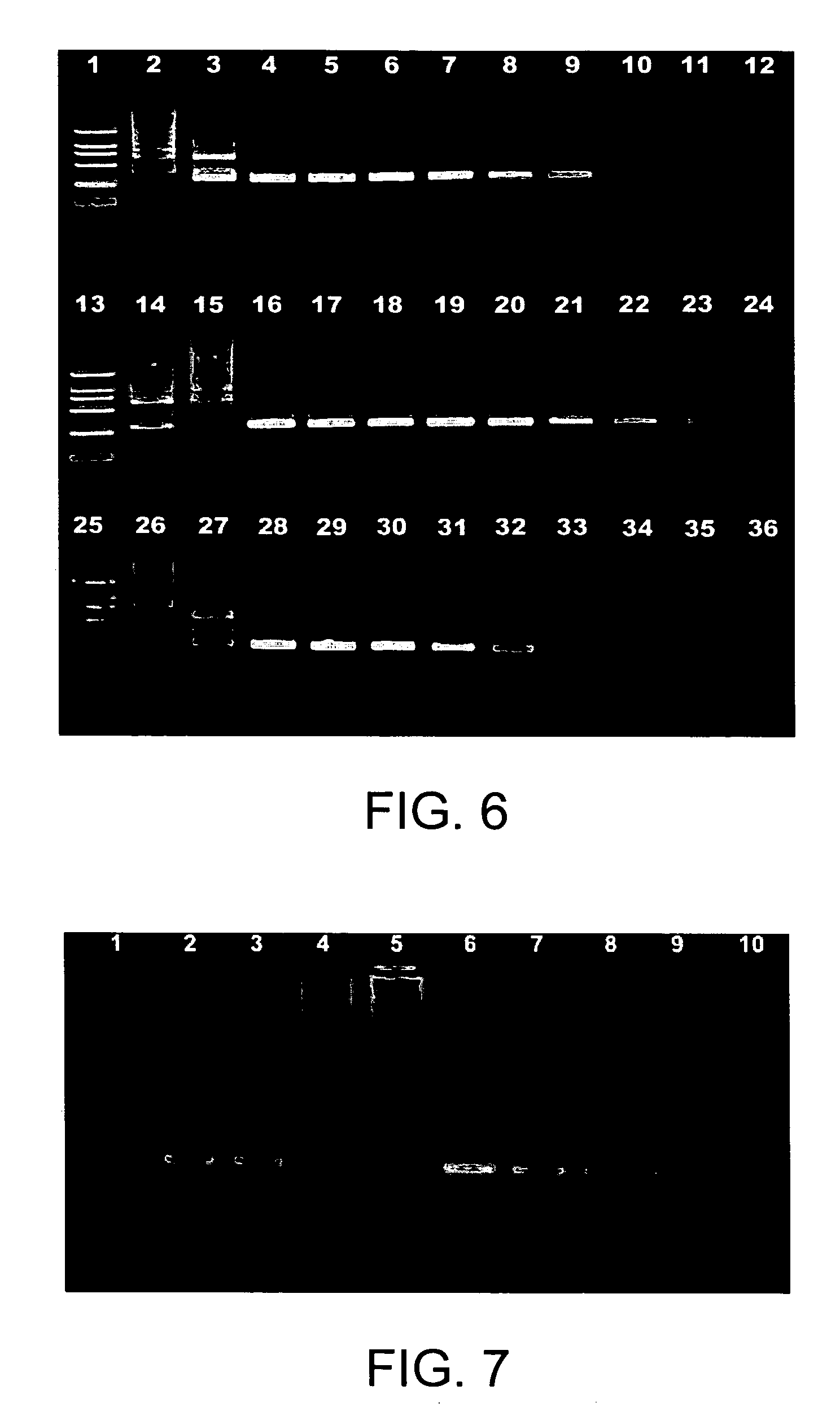Method of optimizing amplification in PCR
a polymerase chain reaction and amplification technology, applied in the field of optimizing amplification in polymerase chain reaction (pcr), can solve the problems of reducing the specificity and efficiency of amplification, affecting the efficiency of amplification, so as to improve the specificity of the reaction, shorten the reaction time, and increase the yield of the target molecules
- Summary
- Abstract
- Description
- Claims
- Application Information
AI Technical Summary
Benefits of technology
Problems solved by technology
Method used
Image
Examples
example 1
Optimizing Common PCR by Using Gold Sheet as Optimized Material
[0055]In this example, 50 ng λ DNA is used as the template in PCR, and two primers are used to amplify a 283-bp segment. The sequences of these two primers are: P1: 5′-GGCTTCGGTCCCTTCTGT-3′, P2: 5′-CACCACCTGTTCAAACTCTGC-3′.
[0056]The amplifications are performed as follows: 94° C. for 2 minutes (pre-heating), followed by 30 cycles of 94° C. for 30 seconds (denaturing), 58° C. for 1 minutes (annealing) and extend at 72° C. for 45 seconds; followed by a final extension at 72° C. for 5 minutes, and thereafter the products of PCR reactions are analyzed by agarose gel electrophoresis.
[0057]As shown in FIG. 1, each reaction of lane 2, 3, and 4 contains a piece of gold sheet, whose size is 2 mm×2 mm; reactions of lane 5, 6 and 7 do not contain gold sheet; and lane 1 is DNA marker (2000 bp, 1000 bp, 750 bp, 500 bp, 250 bp, and 100 bp). The amplification results of PCR containing gold sheet (lane 2, 3, and 4) show the single predo...
example 2
[0058]Optimizing low copy PCR by using gilded silicon as optimized material
[0059]In this example, the template used in PCR is pBR322 plasmid DNA, and two primers are used to amplify a 342-bp segment. The sequences of these two primers are:
[0060]
P1: 5′-CTAACGGATTCACCACTCCAAGAA-3′;P2: 5′-GACTTCCGCGTTTCCAGACTTTAC-3′.
[0061]The amplifications are performed as follows: 94° C. for 2 minutes (pre-heating), followed by 45 cycles of 94° C. for 30 seconds (denaturing), 58° C. for 1 minutes (annealing) and extend at 72° C. for 45 seconds; followed by a final extension at 72° C. for 7 minutes, and thereafter the products of PCR reactions are analyzed by agarose gel electrophoresis.
[0062]As shown in FIG. 2, lane 2 is the result of the PCR containing 105 copies of pBR322 plasmids as template; lane 3 is the result of the PCR containing 104 copies of pBR322 plasmids as template; lane 4 is the result of the PCR containing 103 copies of pBR322 plasmids as template; lane 5 is the result of the PCR cont...
example 3
Optimizing Single Molecule PCR by Using Colloid Gold as Optimized Material
[0063]In this example, the template used in this example is single DNA fragment prepared from pBR322 plasmid by nanomanipulation: imaging, dissecting and picking up single DNA fragment with the help of atomic force microscopy (AFM). The primers are the same as those of example 2.
[0064]The amplifications are performed as follows: preheating at 95° C. for 2 minutes; 10 cycles of 95° C. for 30 seconds (denaturing), 65° C. for 3 minutes (annealing) and 72° C. for 45 seconds (extension); 10 cycles of 95° C. for 30 seconds (denaturing), 65° C. touch-down to 58° C. for 1 minute (annealing) and 72° C. for 45 seconds (extension); 30 cycles of 94° C. for 30 seconds (denaturing), 58° C. for 1 minute (annealing) and 72° C. for 45 seconds (extension); finally, additional extension at 72° C. for 7 minutes, and thereafter the products of PCR reactions are analyzed by agarose gel electrophoresis.
[0065]Colloid gold (10 nm, 0.0...
PUM
| Property | Measurement | Unit |
|---|---|---|
| height | aaaaa | aaaaa |
| temperature | aaaaa | aaaaa |
| surface area | aaaaa | aaaaa |
Abstract
Description
Claims
Application Information
 Login to View More
Login to View More - R&D
- Intellectual Property
- Life Sciences
- Materials
- Tech Scout
- Unparalleled Data Quality
- Higher Quality Content
- 60% Fewer Hallucinations
Browse by: Latest US Patents, China's latest patents, Technical Efficacy Thesaurus, Application Domain, Technology Topic, Popular Technical Reports.
© 2025 PatSnap. All rights reserved.Legal|Privacy policy|Modern Slavery Act Transparency Statement|Sitemap|About US| Contact US: help@patsnap.com



